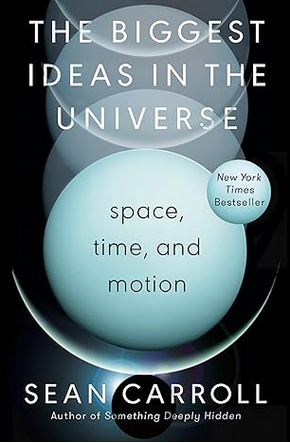Has your dinner time conversations been dragging a bit of late? Feel like raising its knowledge level to a bit higher than the usual synopsis of the most recent reality TV show? Then take the challenge presented by Sean Carroll in his book "The Biggest Ideas in the Universe – Space, Time and Motion". Using this, your conversation might soon be sparkling with grand thoughts about modern physics, time travel, going faster than light and the curvature of the universe.
Most of us remember humorous stories from early science courses. For instance, do you remember the one about gravity being responsible for apples that fall from trees? Or the one about letting a free-falling cannonball and a feather race to the ground? Well, physics has piled on a lot more knowledge since the origination of those stores. Now, we can measure and model the precession of Mercury as well as contemplate lifestyles at an event horizon. Knowing more of how we derive these modern physics concepts and how they fit into our general knowledge could enliven any conversation.
Carroll's book aims to empower the reader with background and details to achieve this eventuality. It starts with a light description of some simple mathematics, such as equations and functions. It then quickly moves on to more particular topics, such as Laplace's demon, relativity, perturbation theory, least action, Hamiltonian mechanics, fields, irreversibility, Minkowski spacetime, manifolds, and momentum tensor. Expectedly, there are equations. But, the math is light. Further, there are no homework assignments. And best, the prose is still lighter. Hence, reading this book is more like reading a magazine article than ploughing through a dissertation.
In addition , the book slots in the names of many physics luminaries together with their contributions. These serve to remind the reader that physics is our interpretation of nature. And they remind us that nature always does its own thing whatever our equations predict. Also, the book continually reminds us of the many questions remaining unanswered; contributions are needed on many fronts.
Will reading this book empower you to discuss modern physics at your next social outing? My answer, "maybe". For instance, you could announce to everyone the components of the Einstein equation. But if someone interjected about the need for inverse metrics, you may not be so ready to respond. Nevertheless, Carroll does provide a ready-to-read book on modern physics. The book "The Biggest Ideas in the Universe - Space, Time and Motion" takes the reader on a fact filled, time tilted, journey and may lead the reader to delve even further into interpreting and predicting nature.
 Universe Today
Universe Today
